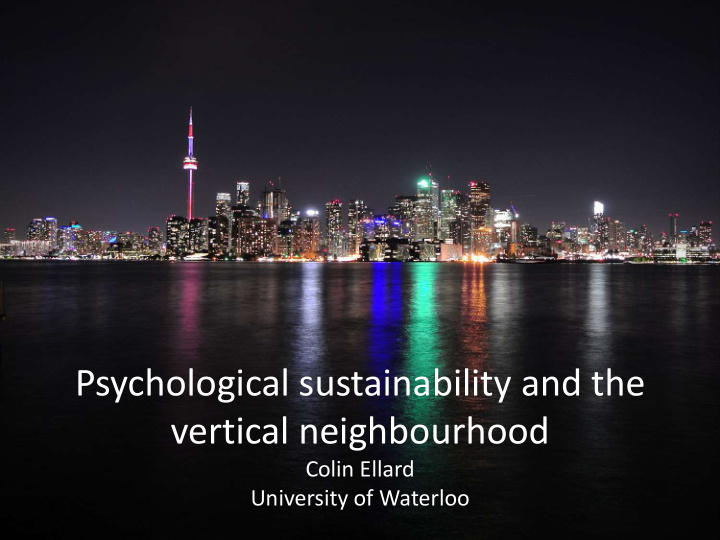



Psychological sustainability and the vertical neighbourhood Colin Ellard University of Waterloo
Quick outline of a quick talk! 1. The challenge of wellbeing in the urban environment: what the data say 2. The three pillars of personal wellbeing 3. How the three pillars are supported (or not) but urban design 4. Special challenges of the vertical neighbourhood 5. Blockages to future success
The urban brain
Psychiatric disorders and urbanicity Depression: 40% higher in cities Anxiety: 20% higher in cities Schizophrenia: 100% higher in cities
This is your amygdala on city
“…cities are, by definition, full of strangers.” (Jane Jacobs)
The three pillars of individual wellbeing Autonomy Mastery Connectedness
The three pillars of community wellbeing Control Command Connectedness
The three pillars of community wellbeing Control Command Connectedness
HOW TO GROW CONNECTEDNESS: INCLINATION AND OPPORTUNITY
The elevator pitch
Nature
Life
Vitality
Opportunity: we have ways of making you walk!
Legibility, culture, history, sense of place COMMAND
Lansdowne Fence by Scott Eunson and Marianne Lovink. Photo: Diana Fleming
Psychological ownership, perceived publicness, equity CONTROL
ACCOMPLISHING THE 3 PILLARS IN VERTICAL NEIGHBORHOODS
The enemies • Geometry • Sterility • Isolation
VALIANT EFFORTS
MOMA Axis Mundi Extension NYC proposal
Linked Hybrid (Beijing) Steven Holl
How to save the world (or at least a piece of it) • Use data! • There is a community of scientists who can give you the data you would like to have! • Don’t rely on policy – policy is most often for emergencies • Consider the economic value of wellbeing as well.
THANKS FOR LISTENING!
Recommend
More recommend